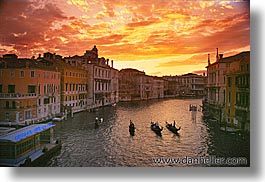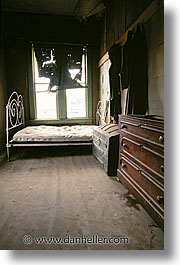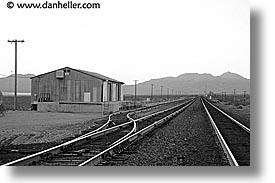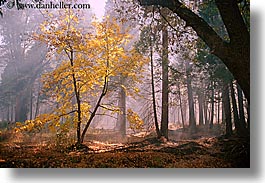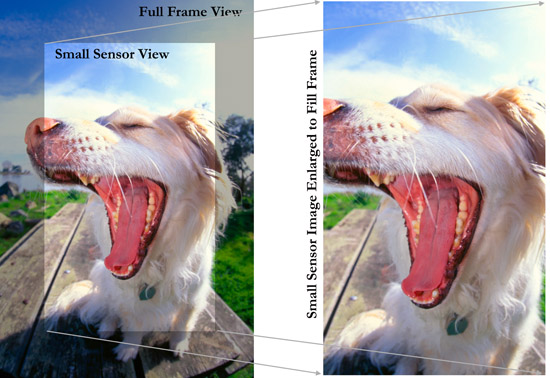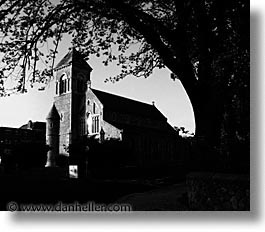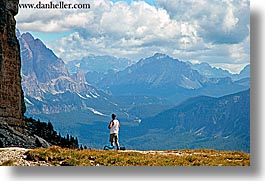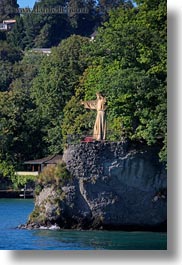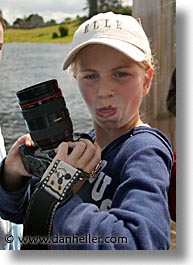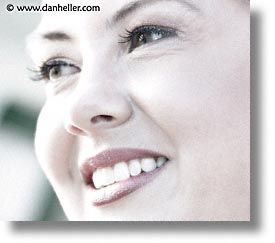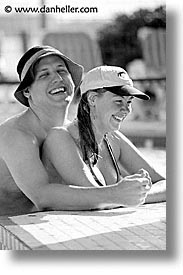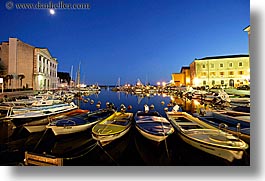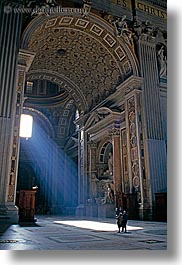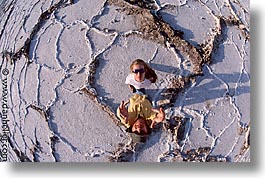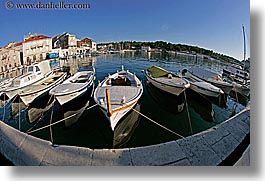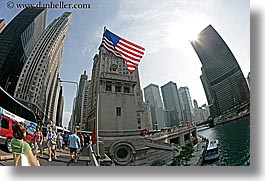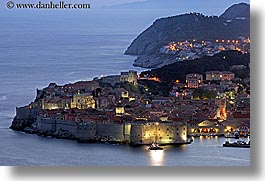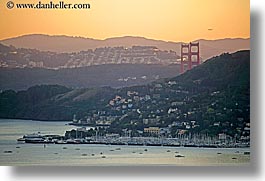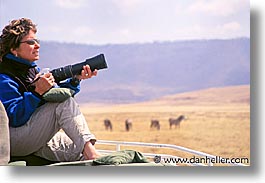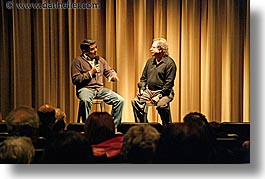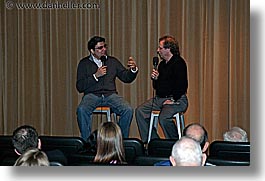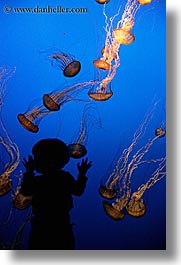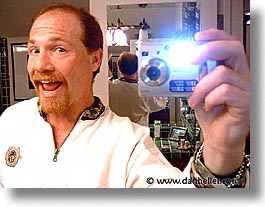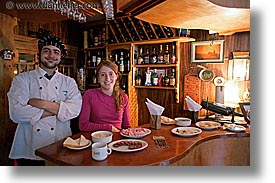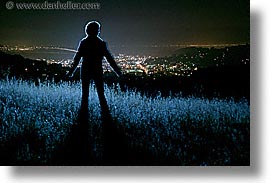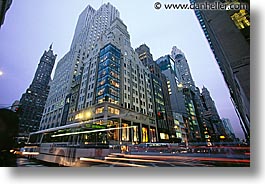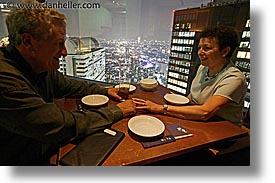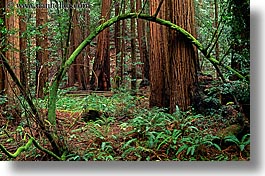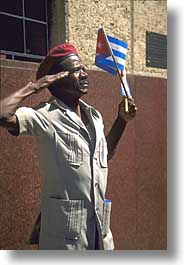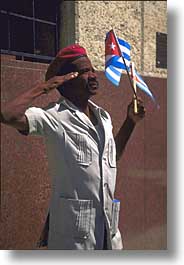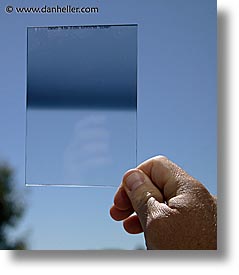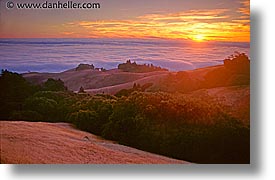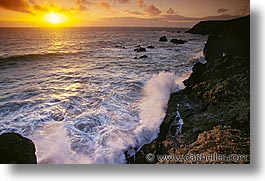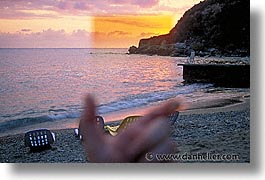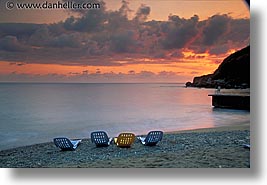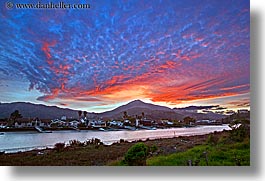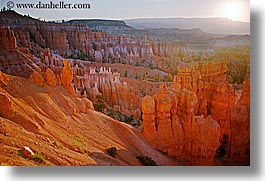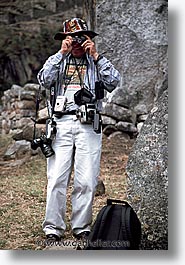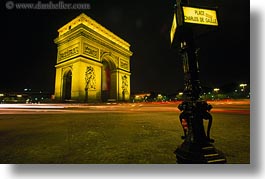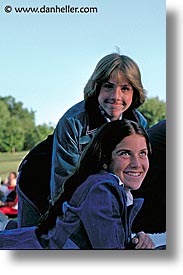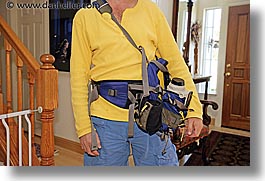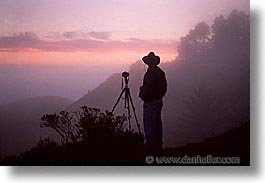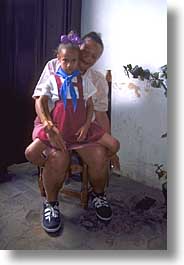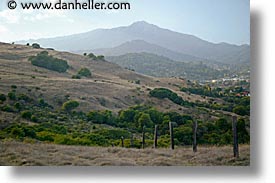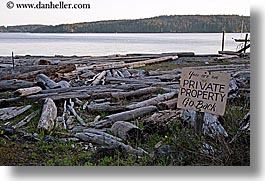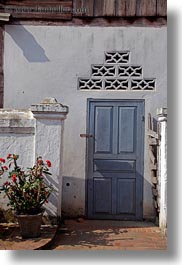|
Markers indicate locations for photos on this page.
Accuracy responsibility of Google Maps
Google Map Goes Here
If you see this text, the map is still loading (or there's an error). |
Needless to say, unless you already own a film-based SLR camera, you are well advised to start your photo buying binge on digital photo gear. It's the 21st century; if you aren't already aware of why you should be shooting with a digital camera, you may want to read up on other big changes you may have missed over the past ten years. (For instance, there was thing in the late 90s called the tech bubble. It made for some entertaining reading.) Here, I discuss equipment types, but I will make no specific product recommendations. You should expect to do research on current product offerings from resources that specialize in reviews and analysis. Top national newspapers and other consumer periodicals have websites that contain up-to-date columns written by reviewers who know and understand you, the target audience. Also, internet search portals are great for finding such resources. Contrarily, and odd though it may sound, asking professional photographers about what camera to buy can be fraught with problems, as they typically don't shoot with the same objectives as you do. Nor do they tend to be familiar with the tourist mindset and temperament. If you ask a pro what kind of camera to buy, for example, they're likely reply with something like, "well, it depends on the kind of pictures do you want to shoot." This is the first sign that you're speaking to someone that hasn't been around non-professional photographers in a long time. (In fact, I never advise people what to buy—I only explain what things do, how they work, and most importantly, dispel myths out there about what people think are true, but aren't.) So, you should start by reading reviews. Once you're "informed" about a subject, it doesn't necessarily help you decide what to buy. The next step is to seek advice from those who are more like you. Again, here's where internet search engines come in handy: look for discussion forums where people discuss products. I often refer people to www.dpreview.com and www.photo.net. Reading discussion forums is a good start for getting a general feeling for whether particular products are considered worthwhile from people who have no vested interest in promoting them. Again, you need to read opinions from peers, not professionals. A pro may have a stinging review of a product because it doesn't offer what he needs, but it may be perfectly suitable for your needs. In light of that, be careful reading "too much" information on discussion boards. There is also a lot of disinformation out there as well. You're looking for a general consensus, not the nit-picky details. When you feel you've narrowed your choices down to the top gazillion products from the bazillion offerings, go to a physical store and look at them. Nothing beats holding something in your hand and putting to the test all the advice that those reviewers and forum members had to say.
Because I happen to use Canon equipment, I will often cite the gear
I use as examples of general ideas. However, this is by no means an
endorsement of Canon as a company, or its products. In fact, most
name-brand products from well-known manufacturers can yield excellent
pictures and have many happy customers.
If you have yet to purchase your first camera, you may want
to start at What camera should I buy?.
It is beyond the scope of this book to act as a buying guide, but if you
are looking to purchase new equipment, it is imperative that you do so
well in advance of any travel you have planned. It's very hard to learn
new equipment on the road, and if anything goes wrong, your options are
limited.
Almost all digital cameras use rechargeable batteries, but some will also take standard AA batteries you can buy in any store. However, many cameras not only won't use those standard batteries, but using them may actually ruin your camera. If you're in a pinch and need to get emergency power, know what your alternate battery power options are.
There are many variables involved, such as whether you use a flash (and how much), if you're using the preview screen to edit pictures, if you use the camera to download images from your memory card, and so on. Experience with your camera is the only reliable test for this kind of info. Many newer cameras have battery status monitors that will tell you how close you're getting to requiring a recharge, so it's important that you're familiar with this.
Granted, this is more of a problem if you travel to foreign countries that don't use the same voltage you have at home. You may not be able to recharge your batteries at all if your camera's power supply doesn't have a voltage converter. A power adapter is not the same as a converter; you need to actually convert the voltage or you'll ruin your camera. Most low-end point-n-shoot cameras do not have power converters like this, so when you're in foreign countries, you must either find a compatible power source, or buy a real converter. (These tend to be much more expensive than adapters.) As usual, read your manual to see if this may be a problem for you.
Many cameras' manuals will describe which functions eat more battery power than others. If battery conservation is important due to travel constraints, this information could be critical. Obvious points are the use of the preview screen, automatic shut-off timer, the use of the flash, etc.
Film cameras are vulnerable to weak batteries for different reasons: they
don't just "die" like digital cameras do. Instead, they tend to linger
in a state of unpredictability, often exhibiting confusing behavior that
appears to look like something else is wrong with the camera. In fact,
more unexplained malfunctions in film cameras can often be attributed
to dying batteries than other problems. (Extreme moisture from humidity
is the second most elusive problem.) Digital cameras don't have this
problem. Instead, they show you a blinking battery icon somewhere on the
confusing LCD panel, and while you're asking everyone around you what it
means the first time you see it, you suddenly figure it out by yourself
when the camera just shuts off completely. And it is then—and only
then—that you suddenly become the master photographer, because you begin
to see all sorts of award-winning photos that you can't take because
your batteries are dead. The genius phase will pass, however, usually
by the time your batteries have been recharged.
Just about every camera sold today has enough resolution (measured as "megapixels") to yield excellent photos. As you'll notice, though, you can buy the same camera with incrementally higher pixel resolution. Should you get a camera with more resolution than its lower-resolution counterpart? This is a nagging question, and you'll hear advice everywhere about how you don't "need" more resolution than, say, six or eight megapixels, because that's enough to make good-sized prints. That's certainly true if all you're looking at is size. But, if you're also interested in the quality of the image, you'll want the higher-megapixel cameras. Why? Because the technology required to make sensors yield better, smoother pictures, also happen to yield more megapixels in the sensor. It's like how TVs that have much, much better color rendering will also happen to have much larger screens. There's no point in putting advanced technology into a smaller product, whether it's TVs or camera sensors.
Digital magnification (also referred to as digital zoom) is usually expressed using phrases like "1.6 magnification factor." This is intended to convey a translation for lens length measurements, not optical magnification. Using the 1.6 example, a 100mm lens will produce a photo that looks like it was taken with a 160mm lens, a 400mm lens looks like a 640mm lens, and a 28mm lens looks like a 35mm lens. Although this terminology makes it sound as though the image is "magnified," it's not—it's simply cropped and then enlarged. Why the important distinction? Because when the enlargement is optical, you get more pixels and you preserve the optical characteristics of the lens (such as the fisheye effect in the sample image). When the enlargement is digital, you actually wind up with less pixels, and a lower-quality image. To make things worse, some cameras give you the option of zooming in even further digitally—up to 10x in photo cameras, and 25x in video cameras—which degrades image quality even more. The degradation of image quality is particularly visible with telephoto lenses, whereas the degradation of optical quality is more visible with wide-angle lenses (including the fisheye).
As we all know, technology is progressing very quickly, and the lifespan
of the small-format sensor is fading. It may not be long before most
cameras are full-frame. At the moment, however, full-frame SLRs are more
expensive, which affect your purchasing decision. If I can help tip
the scales a little more, I'll also add that SLRs that use full-frame
sensors tend to have other, more advanced and useful features than their
small-frame counterparts, making the purchase all the more worthwhile in
the end. So, if you are even moderately serious about travel photography,
I'd urge the full-frame route.
Still, dust can also get onto the sensor through the lens itself if it's
a large zoom lens with a zoom ring that physically moves back and forth.
(Canon's EF 100-400mm lens is one of the best of its kind optically,
but it'll throw lots of dust into the sensor chamber.) The natural
tendency is to clean the sensor, which doesn't sound like a bad idea to
the uninitiated. However, this is fraught with various problems.
The thing is, since cleaning can make a dust problem worse, I usually don't bother cleaning my sensor till I return home from a trip. And I take the really simple and lazy way out: I send it to a lab.
Once again, technology is not far behind. At the time of this writing,
Canon has announced a new camera that has a self-cleaning mechanism
inside. It does this with an extra sheet of material that literally
"shakes" the dust off of itself. Whether this actually works has yet to
be tested by a broad consumer audience, but it's good to see someone's
working on it.
For point-n-shoot users, the lens is built into the camera and you have no ability to change it. Here, you need to get your entire focal range from a single lens, so you can expect to buy a camera whose lens goes from about 28mm or 35mm all the way up to 105mm to 200mm. The broader the range, the more flexibility you have in the picture styles. However, with big ranges will come big prices. One thing to look out for, is digital zoom. This is a useless and deceptive feature, because all it does is use the same pixels in a normal photo and merely "blow them up bigger" (thereby cropping out of the frame what no longer fits). This almost always results in a lower-quality image that even aging grandparents can see. ("Why does Timmy have pock-marks on his face?!" "It's the digital zoom, Gramma. We didn't think you'd notice.") To avoid potentially serious family squabbles, use only the optical zoom part of your point-n-shoot camera. We'll get into the various types of zoom ranges with the short and long focus ranges in a minute.
When buying multiple lenses, or when considering a single lens with a very broad focal range, there's a trade-off between flexibility and weight/bulk and quality. The greater the zoom range in a single lens, the lower the quality of the image at each end of the range. This is simply due to laws of physics of how mirrors bend light. The greater the zoom range, the less capable the mechanics are within the lens to preserve image quality at the close end of the range. The problem is reduced by shortening the zoom range of the lens. However, having many shorter zooms requires having more lenses to lug around. So, there's your trade-off. Again, I find that three lenses that span the entire range into subsets maximize the trade-off between quality, flexibility, and weight/bulk. I also realize that three lenses may be a lot for some—especially while traveling on foot through a cute little European town. Sometimes, too many lenses just gets in the way. (Note that even though I bring a lot of equipment with me, it doesn't mean I enjoy it.)
Next, I cover the various options within each of the zoom ranges.
If you're going to buy multiple lenses, consider at least the practical
side of having to change lenses frequently. For this reason, again, a
good span in your mid-range zoom should go from at least 28mm to 105mm.
Less than that, and your range may be too limited for enough variety of
photos, requiring lens changing. And the time and annoyance of changing
lenses are not to be underestimated—you can miss a lot of great shots,
not to mention burn out on the process, and thereby avoid doing it.)
The biggest concern about telephoto lenses is, the longer the distance, the
more likely you'll get motion blur from "hand shake." Hand-holding the
camera while shooting long focal ranges makes pictures blurry. There are
three ways to deal with this problem: use a very fast shutter speed
(which requires a very fast film, which isn't desirable), use a tripod
(which may not be practical, especially for moving subjects, or traveling
on foot), or by using "image stabilizing" technology. Also known as "IS",
stabilization employs a gyroscopic element that counter-balances motion,
keeping the lens effectively still. Not only does it help with long
distances, one can hand-hold pictures with shutter speeds down to about
1/8 or slower (with some practice). This is good for grab-shooting and
candid shots on the move. When you calculate that "IS" saves 30-40%
of pictures that would otherwise by ruined by unintended motion blur,
its cost is justified by the amount of quality pictures you get.
Slightly more expensive is the 600mm f/8 mirror lens from Sigma, weighing in at 29oz. Costing $350, it's not a bad deal for the length. (Compare with Canon's 600mm traditional lens that costs $11,000.)
The final word on lenses is: work up to it. Most people should buy one
lens at a time and get familiar with it before getting the next one.
The "collection" you end up with has to interweave nicely, or you'll
waste time and money, not to mention be burned by too much "stuff" and,
end up failing to get the pictures you really want.
Keeping your lens clean is important, but not something to be obsessed about. Any cotton fabric works fine—I usually use a t-shirt, and rub thoroughly on any areas where there may be smudges (usually, peanut butter). There are special cloths you can buy, but these are a waste of money, unless you tend to walk around shirtless. Some lenses have a special film-like glaze over it, which should be protected, but again, if it gets a finger-print on it, don't sweat it. By all means, don't use any liquids whatsoever to clean a lens. You can certainly use liquid solutions marketed for this purpose, but it's not going to be more effective than rubbing it vigorously with cotton.
It takes a lot of material on the lens glass to interfere with an image.
(This is nowhere near as bad as dust on the sensor, which does show
up conspicuously in images.) My main advice: keep your lens cap on all the
time. When you're about to take a picture, remove the lens cap, keep it
in your hand, and immediately replace it when you're not shooting. Make
this a habit.
The flash is probably the most misused item on a camera, but for understandable reasons. Because flashes make light, people use it when the camera says there isn't enough of light in a scene. Therefore, the flash is used as the main light source. And that's precisely where the problem lies. Pictures taken this way often results in bursty, flat pictures, with people's faces washed out, and harsh shadows projected into walls.
You may be wondering: why not set the ISO all the way up all the time? Well, this comes at a cost: higher ISO settings also increase the amount of digital noise in the picture, which is similar to film grain. You won't notice this on the camera's preview screen, but you will notice it enlarged on your computer screen and any most prints you make. Some cameras perform better than others in this regard, so take a couple of test pictures to see whether you like your camera's results. You're not always going to get professional-looking results from consumer-grade cameras, but it's your choice on where the dividing line on acceptability between a shot using a flash, or a natural look with grain.
If you're in a low-light situation, and setting the ISO rating still isn't
sufficient (or higher ISOs yield undesirable noise), the next option
is to combine a ISO setting that's acceptable with the use of a flash.
Since the goal is to avoid the bursty punch of the flash, you want to
reduce its power output enough to give the light, but not overly so.
The combination of a reduced flash burst, and a higher ISO rating means
that the combined ambient light and the lower flash burst may provide
satisfactory results.
When you use a flash, it brings up the light on the darker parts of the picture, thus reducing the range of light between the two end points. Hence, the cameras captures more detail at both end points, and the entire picture gets more life.
So, why only "people" pictures? Obviously, it's not just about people, but it's about subjects that are close to the camera, and that's usually people. Why is proximity important? Because the flash's light has a limited range, usually about ten feet in front of you. Beyond that, the power is too weak to have any appreciable effect. (This is called light falloff.) So, the only shadows you're going to lighten are those falling on subjects that are close enough to the camera's flash.
When the flash is used in this manner, it is said to be a "fill flash."
That is, it "fills" the dark areas of the picture. In fact, many cameras
have a setting specifically called, "fill flash mode."
(For an in-depth discussion on the various uses of the fill flash, see
Using Fill Flash.)
When using a tripod, you no longer need to worry about a flash, nor should you set your ISO rating higher. The only reason to do that is so you can hand-hold the camera during the picture. When using a tripod, you don't need to hand-hold it, and the challenge for getting enough light is no longer applicable. You can keep the shutter open all you like (so long as you have a cable release). In fact, keep your ISO rating low—a setting of 100 is best.
Some people also suggest that the skylight and haze filters will "protect the glass against scratches," but what you're effectively doing is placing a very cheap piece of glass in front of expensive glass (your lens). Worse, when you put on any filter, you're introducing another layer of glass, which introduces more elements for light to reflect bounce around inside the lens, causing more lens flare and sporadic glimmers. As for protecting your lens from "scratches," I've never done that in all the lenses I've ever owned. I've broken lenses completely in half many times, but even then, I've never scratched the glass. Lens glass doesn't scratch easily—it's composition is such that a rather blunt impact with a particularly abrasive object is necessary. The likelihood is very small, and not worth the image degradation you get with such filters. If you're really nervous, us a Circular Polarizer (discussed next), as it will at least help make the picture look better in most circumstances. In general, it also helps to develop a habit of keeping a lens cap over the lens when I'm not shooting. (See section on cleaning your lens.)
On the other end of the "useful" spectrum is the circular polarizer, which is the most useful filter of all. Yet, it also takes the prize for being the most misunderstood filter. What people are familiar with is how polarizers make skies bluer, but the reason why it works is what makes it such a great filter for many other uses as well. What polarizers do is block light that reflects off things. This bounced light is "polarized" (so named because it bounces in exactly the opposite direction as the direction it came from). In the process, light goes from a randomly erratic pattern to a very precise pattern, and it is this pattern that polarizers filter out. Reflected light includes glare, reflections, highlights, and so on. This effect is found in more than just "window" reflections, but all kinds, including shiny reflective objects that you can see on just about any surface: skin, fruit, wood, fabrics. And here's where the real benefit comes in for reducing reflected light. When you have photons bouncing all around, it dilutes the effect of other light. When you remove this unwanted light, what ultimately hits your lens is a higher concentration of the actual colors that you want. Leaves appear greener, roses are redder, and yes, you guessed it, the sky is much bluer. In effect, you get a much richer color palette. Granted, this isn't going to jump out at you in every case, but many pictures often do better with a polarizer than without one. Understanding how and why a polarizer works will help you make better use of it. Polarizers filter out light in 90-degree angles from the orientation of the filter, and because it's circular, you can rotate the glass to block out the (polarized) light you want. As you rotate the filter on the lens, look through the viewfinder and see how your scene changes. Reflections on the surface of trees' leaves come and go, a pond or lake can appear darker (greener or bluer), as you remove the reflections from the sky, the sparkle of snow can be eliminated or enhanced, and the "blueness" of the sky can be punched up, or taken down. As you can see, you can both add and reduce the contrast of a photo, depending on how you orient the polarizer on the lens. While you "can" get more shadow detail in some pictures by filtering out polarized light, don't expect the kind of results you would get using a fill flash. The one caveat to polarizers is that they reduce the amount of light to the camera by 1-½ stops, which means that your exposure time will be longer. You don't have to do anything about this—it'll be automated by your camera—but the point is that you may not have enough light in darker conditions to hand-hold a picture if you're using a polarizer. It's easiest to use them in mid-day bright sun, where its effects are more dramatic, and use them at night with a tripod. (I often use a polarizer when doing night photography in city streets to avoid the shimmer of lights off of the streets.) As you gain experience and develop your eye to see the subtler effects on lower contrast pictures, you'll see that it really helps in rain, overcast skies, and other atmospheric conditions that diffuse the natural light your eye sees.
Many of those spectacular scenic pictures you see in postcards or in
photography books like this one, were probably taken using a "split
neutral density filter." Also called a "Split ND," this filter has a
neutral tonality (doesn't change color) that graduates from a darkened
part of the glass to clear, so you can control scenes with oppositely
graduated ranges of bright to dark. A common example is a sunset, or
a shadowy foreground say under a tree. The photo here illustrates this:
the plant in the foreground would never come out if the darker part of
the bright sunrise wasn't "filtered" out to leave a more balanced image.
Graduated filters like the split ND don't have to be color-neutral.
You can get colors as well, including variations of "sunset" qualities,
as shown here. When choosing colored filters in a graduated format,
understand that slight colors have dramatic effects on the final
image. Sunset filters can assist in reproducing the original colors of
the sky that you see, but cannot be captured by film or digital sensor
because the light ranges exceed the capabilities of the media.
How filters work requires a better understanding of how cameras respond
to light. To read more about this, see Techniques on Metering Light with your Camera.
Now, it's not like the less-expensive products are "cheap." They're usually fine, but have limitations that the more expensive items don't have. Emerging photographers think they need to "grow into" these products, so they buy low first, thinking they'll upgrade later. And this is when the accumulated cache of unused products begins. When you've repeated this cycle several times, you're writing articles like this. Yes, I read a very similar article when I was getting started, and I couldn't believe it either, but sure enough, my in-laws were soon receiving tripods for Christmas.
Now, I'm not suggesting you start with the top-of-line products.
Quite the contrary. if it were as easy as simply pointing to a finite
set of selected bags and tripods, then I'd do so now and be done with it.
The problem is, everyone is not the same size, has the same strength,
shoots the same subjects, or carries the same equipment. Darn. Making
matters worse, each season, all manufacturers come out with new lines of
products to replace last season's line-up, in anticipation of the next
round of remorseful buyers. The solution to this problem starts with a
recognition that no one product will be enough—you need to pick a bag
that serves some of your camera-carrying needs, knowing that you'll
later have to get another bag that serves other needs. The moment you
attempt to find a bag that serves all your needs, that's when mistakes
are made. (Oh yes—same for tripods.)
Ok, there's one more, but it's not a bag: it's the "photo vest" or "jacket," with tons of pockets. I have one and I like it under some conditions, but it's never better than other options, so I never use it anymore. The worst part about the photo vest is that it adds too much warmth. Any weather warm enough for snow to melt is, for me, too warm for a photo vest. Lighter-weight vests may be better temperature-wise, but are too flimsy for heavier camera equipment (namely, lenses). So, I don't use vests. Anyway, back we go to the camera bags. Each type is invaluable in various situations, but what you really need to look for are those that have the durability and ruggedness for larger, heavier equipment as you advance in skill and experience (because you'll buy more—and therefore, heavier—gear). By consequence, you may feel like you're buying a more expensive bag that you don't yet need, but this is an illusion. You do need it. (See how this game goes now?) The devil is in the details, though; it's easy to overdo it, and buy far more than what you need, so we need to examine this further. Let's start by choosing a camera bag strictly for transport purposes. That is, you're going on a plane, and you need to get your stuff from one country to the next. Of course, you need to see if your stuff fits, which is why some people actually bring their entire cadre of equipment into the photo store to see which bags can actually carry everything they have. Bags used for transport tend to be far more expensive than those for more practical day-to-day shooting needs, where you carry around your equipment as you shoot. (Rarely do you ever carry everything you own on any one shooting foray.) It's true that you need a good camera bag to transport all your equipment, but this is why "one bag" will never serve as your "only bag." But, it's also easy to over-purchase by getting a bag designed for transport of everything you own, when you rarely need all that for any given trip. If you have an appreciable amount of equipment, expect to get one kind of bag for transport, that's high-end, but not so big that you topple over whenever you lean to one side or another. Here, you need to look for one important feature: protection. You needn't actually get to your equipment as much as you need to protect it from being banged around in the overhead bin in the airplane, or on a train, or in the trunk of a taxi. Where access becomes important is when you're looking at bags you use while you're actually shooting. And here, protection is a comparatively less-important objective. Access is now king. So again, it's easy to over-purchase if you're getting something with tons of protection that you simply don't need. So, put yourself in a real-life shooting scenario where you don't necessarily want to pack your equipment, you want to get at it. If you can't use the bag easily and effectively in real-life situations, it's not the bag for you. With that intro, let's examine the different bag types.
If you're a casual shooter, with a modest to small equipment list, it's certainly possible that a lightweight backpack can serve both purposes. But, this exception is really for the non-serious shooter, just to save money and minimize the amount of equipment you own. Backpacks are really not the best type for active shooting, because "access" to your equipment is the most difficult of all bag types. Active shooting often requires access to lenses and such while standing up and/or walking, and having stuff on your back where you can't get at it makes things hard. Sure, you can set a backpack on the ground next to you, but that presents all sorts of problems for many conditions, like shooting in the streets, or being in conditions where the ground isn't stable or has other debris that I'd rather not mention. Still, there are some good backpack designs, but if you have to use one while shooting, access becomes important again. If you're going to get a backpack used for both access and transport, a design characteristic you want to avoid is the "front-loading" model, which is where you open the backpack on its "front side" rather than through the top. Here, to get access to equipment, you have to lay the backpack on its back and open up the front. The intent is to allow access to as much stuff as possible at one time. However, the problem is that the back side is what rests on the ground, and we just covered that problem. It's the same side that rests on your back while you're carrying it, so whatever sticks to it from the ground, will now be attached to your back. This isn't a problem for studio photographers, who can leave their backpacks on a clean floor. But for travel photography, this design doesn't work so well. Therefore, I like top-loading backpacks for combo transport/shooting, especially those with reinforced bottoms that can sit firmly on the ground. Because most people buy backpacks for transport only, few camera bag makers use this design anymore, with Tamrac being one of the last hold-outs.
The hip bag was designed precisely to compensate for the main drawback of the backpack. This design goes over the shoulder and slings to your side, and are almost all universally top-loading. (It can also sling in front or behind you.) Sling bags have a large main compartment for access to lenses and such, clearly designed for the active shooter rather than transport. It's true you can use these for transport, but its placement around your body means that its balance isn't optimal, and its physical bulkiness makes it harder to carry other things at the same time. Therefore, it may be worthwhile to have a smaller sling bag packed in luggage, where you don't actually use it till you're actively shooting. In the meantime, haul your equipment in a backpack. Now you see why you may need two different camera bags.
Fanny pack designs are very convenient in how they allow you to "carry just what you need, when you need it." The best of this group are those whose designs include a strap over the shoulder, which makes them more similar to sling bags. This is great for better weight distribution, but it works only so long as you don't over pack the bag with everything you own. It's easy to over-stuff fanny packs, causing them to droop and put pressure in places that you won't want it. (This is especially annoying for small-bladder-ed people, or those who like very large belt buckles.)
Practicing what I preach, I don't use the fanny pack for transport; that
I leave to my top-loading Tamrac backpack, since it has the ruggedness
and protection necessary for airports, cities, and other non-shooting
(transport) conditions.
First, let me get this out of the way: monopods are not tripods. Monopods are are fine for offloading heavy lenses (like sports photographers use), or if you're standing only in one place, shooting the same thing at shutter speeds that don't require being absolutely still (ie., you have Image Stabilization in your lenses or camera). But, don't assume you can use a monopod as a tripod. If it weren't for the fact that I see so many people using monopods as if they were tripods (usually with remorse), I wouldn't have to warn you about it here. In short, you need to have a bona fide tripod. The best tripods cost far more than you think they should, because you will eventually learn that carbon fiber has the strength and durability to not "jiggle," plus they're light for easier transport. These alone make the higher price worth every penny.
There are two major leg-extension designs: the twist lock, and the key lock. The "twist" type works by turning the tube to lock the leg into place, which can have various levels of tightness. The problem with this model is that it gets increasingly annoying to do this task for each leg, every time you want to use it. It's also easy to get wrong. if it's not "tight enough," it'll start drifting downward as your long exposure shot gets ruined. Also, when it's cold or rainy, you really don't want to deal with twisting cold metal. This means that the "key" mechanism is your choice for leg-extension design, which is just a latch that takes only a single quarter-turn and you feel the leg locking into place. It's a single switch, not a "level of tightness." One more thing to consider: if you're going to a cold climate, you might consider buying Styrofoam pipe covering, normally used to cover water pipes outside to keep the water from freezing. You can get this stuff at any hardware store. Just get a short piece, cut it into sections as wide as your hand, and then duct-tape it to the part of the tripod legs where you carry it. Gloves or not, you'll actually survive cold-weather photography.
Again, the major consideration is weight, just like with the tripod itself. So, again, carbon fiber is the best bet here. One thing to note, though, is that, unlike with the tripod, the weight of your camera equipment governs the size of what head you use. If you've got a huge 10lb. lens, then you've got other issues to concern yourself with.
Just like camera bags, it's often the case that one item doesn't satisfy
all needs. Fortunately, secondary tripods are not nearly as expensive. I
always carry a tiny table-top tripod in my camera bag, just in case I need
one, but don't have my main one around. These are great for using inside
buildings or on street corners, where you don't have the room, or aren't
allowed to use them. A table-top tripod can be hand-held against a wall,
on a table, or even on the floor (with you down there too). These aren't
really capable of long exposures (many minutes), but they're perfect
for pictures that you can't hand-hold because it's too dark. (And remember,
flash-free photos generally look better, so the tripod can mean the
difference between a great photo and a so-so photo.)
When you take pictures, the camera stores the digital data on a media card. There are many types to choose from, and while only some high-end cameras support multiple types at the same time, your camera will probably support either an SD (secure digital) or CF (compact flash) card. The differences are largely unimportant in the grand scheme of things, and you shouldn't make a buying decision on a camera based only on this. (If such details are important to you, you need a depth of information well beyond the scope of this book.) To give you a hint about the differences is that the speed in which data can be read and written to and from the card is greater with the CF card than the SD card. This affects the speed in which your camera can shoot, and the speed in which you download the images from the card later. But, the camera manufacturers know this, and design the camera to use the type of card that is most appropriate for it. It's unlikely your camera will exceed the read/write capabilities of today's media cards. There are other card types, too, but these are the two most common ones, and besides, the prices between them don't vary much. Speaking of price, my rule of thumb for this type of product is to buy whatever $50 will get you. That always seems to be the breaking point between the high-end and low-end products. At the time of this writing, $50 buys a 2G (two gigabytes) media card (of any type). Last year, $50 could get a 1G card, and the year before that, it was 256M (¼ of a gigabyte). By the time you read this, chances are that you'll be getting 4G cards for $50. Whether you should get a higher capacity card is dependent on how much you tend to shoot, how long you plan on being away, and how many megapixels your camera is. Megapixels translates to the size of the file for the image, but this is not an exact mesaurement. Not every picture translates to the same size file, because file data doesn't correlate directly to pixel data. Factors like ISO setting can make file sizes bigger, and other user configurable parameters can change this value dramatically as well. Still, we can roughly guess that an 8-megapixel camera will create files that average in size from four to six megabytes. So, a 2G card will hold roughly 300-400 pictures under typical shooting conditions. If you are used to thinking in terms of rolls of film, that's anywhere from 8 to 12 rolls. When you used to bring your film camera on vacation, how many rolls did you go through? think of that number, but then also consider that with digital cameras, you can preview and delete photos as well. The next thing to know is your shooting habits. If you're likely to shoot 50-100 photos a day, you could get a 2G card and a 4G card, which may last about two weeks. For the $150, that's not bad. However, if you think you're going to shoot more than that, or you're going to be gone longer, it may be more cost-effective to get an external storage device rather than multiple media cards.
There are two ways you can store images from your media card. You can put them on your PC, or (if you don't want to lug it around), or you can buy an external storage device. Personally, I shoot anywhere from 300-400 shots a day, so my routine involves shooting with a 4G card on my camera, and downloading images every night to a storage device. The one I use can read my media card, and write it onto a hard drive inside it. (The reason I don't mention the brand is that the last time I mentioned what I used, it was obsolete by the time the book came out, and I had already changed to a new device.) Whatever external storage device you get, it'll have a hard drive no different than the kind you have in a computer. The fact that it's a combo unit that also reads the media card makes it simple, convenient, and small (compared to the alternative, which is to carry around a PC.) As noted earlier, it's no accident that the price of an external storage device starts at just about the same price as where it's no longer cost-effective to use multiple media cards. But, let's examine that option of bringing your PC along on holiday (hardly unusual these days). It already has a hard drive, so all you need to do is read the card and store it on your PC. Lo and behold, you can buy a simple media card reader that has no storage capacity—it just plugs directly into your PC. These typically cost anywhere from $15 and up, depending on the number of different card types it can read. If you're paranoid (as I am) about losing your images, you can bring both a PC, and an external hard drive, and back up the images from one to the other, just in case something happens. And you know Murphey's Law.
If you ever do long exposures, you need to have a cable release. Each camera manufacturer has their own proprietary kind, so your options are limited. Just be sure to have one, as you'll need it if you want to do exposures over 30 seconds. (Only a few camera models will do shutter releases longer than 30 seconds without a cable release.) Some advanced models come with programmable settings that allow you to control the exact length of time you want an exposure to last.
It's also good to have a tiny flashlight, a padded tri-fold pouch that has the basic filter set (polarizer, and ranges of graduated ND filters), a hot-shoe mounted bubble level (used with the tripod to make sure the camera is level), snacks, some pens (I can't believe how much I actually need those, often for non-photography-related stuff), and the camera manual. (Oh yes—bring that manual!) Anyway, all that goes in your backpack or whatever you're using to transport. Last word of advice about packing: determine the places where things go and leave them there, even when you're at home. Never remove items from your pack unless you're using them, and this is for one main reason: there are so many things to remember that you simply can't expect to think of them every time and pack them up. You will invariably forget to pack something, especially those important-but-rarely-used items, and you'll curse yourself for having forgotten. So, the best thing to do is populate your camera bag once, and never take things out, except when you use them. When you're done with something, put it back in the same place. You'll get so used to things being in the same place every time, you'll love (and depend on) how quickly you can go directly to the item you're looking for. What makes photography fun is not having to deal with the things that go wrong, and disorganization is the primary reason why they do. If you can have your equipment in a state of readiness that allows you to leave on a moment's notice and shoot most any kind of situation, you'll never suffer from that frustration that plagues even the pros.
Click to recommend this page: |
|
